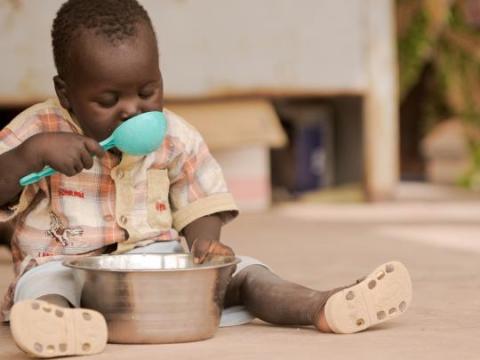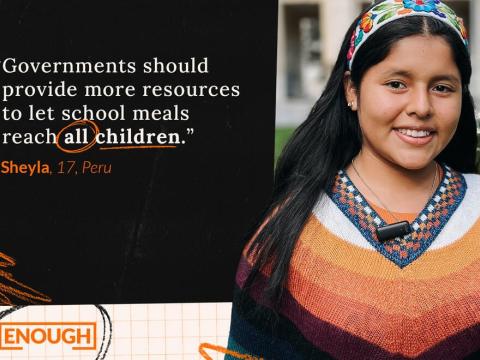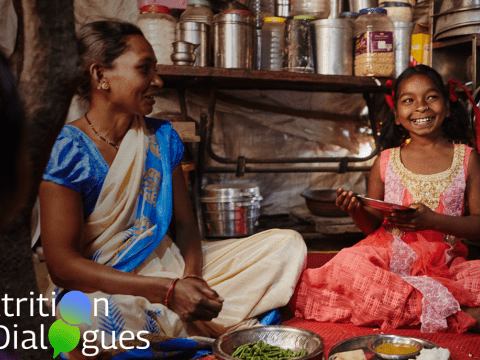
Children's food security and nutrition are in a poor state of affairs
Dr. Andrea Galante's analysis of the State of Food Security and Nutrition in the World report reveals the need for a multifaceted and innovative approach to feeding children
4 September, 2024
The State of Food Security and Nutrition in the World 2024 (SOFI 2024) report offers a crucial analysis of global food security, highlighting the urgent need for targeted interventions in child nutrition. As malnutrition continues to disproportionately affect children worldwide, the report underscores significant gaps in the financial landscape that impede progress.
Overview of the Financial Landscape
The SOFI 2024 report emphasizes a fragmented and inadequate financial landscape that struggles to meet the increasing demands of global food security and nutrition, particularly for children. Funding sources are diverse, including public domestic expenditure, official development assistance (ODA), other official flows (OOF), and private sector investments. However, current financing levels fall short of what is necessary to achieve Sustainable Development Goals (SDGs) 2.1 and 2.2, which aim to end hunger and all forms of malnutrition by 2030.
Public financing is a cornerstone of food security and nutrition initiatives. However, the SOFI 2024 report reveals a concerning trend: public spending on agriculture per rural inhabitant in low- and middle-income countries (LICs and MICs) remains grossly inadequate. For example, public spending in LICs averages just USD 8 per rural inhabitant, a stark contrast to the higher levels seen in upper-middle and high-income countries. While some countries, such as Benin and Uganda, have demonstrated growth in domestic public financing for food security and nutrition, this increase is not uniform across all LICs and MICs, reflecting significant variability in domestic commitment.
Official Development Assistance (ODA) and Other Official Flows (OOF)
In 2021, global ODA and OOF for food security and nutrition totaled USD 77 billion. However, less than a quarter of these aid flows were directed toward food security and nutrition, with the majority allocated to food consumption rather than addressing the root causes of food insecurity and malnutrition. While the concentration of these funds in LICs and MICs, particularly in regions like Africa, is crucial, their effectiveness is limited by their focus on immediate needs rather than on building long-term resilience and transforming food systems.
The report also highlights challenges in tracking private financing flows due to data limitations. Despite the critical role of private sector investment in agrifood systems, available data suggest that these investments are insufficient to meet global needs. For example, net banking loans to agriculture in LICs, LMICs, and UMICs have sharply declined, dropping from USD 22 billion in 2017 to just USD 2 billion in 2021. Philanthropic contributions and cross-border remittances while significant, are similarly inadequate to bridge the funding gap.
The SOFI 2024 report identifies several key challenges within the current financial landscape:
- Fragmentation and Lack of Coordination: The financial architecture supporting food security and nutrition is fragmented, leading to inefficiencies and reduced impact of available funds. Better alignment and synergy among different financing sources are urgently needed.
- Insufficient Focus on Root Causes: A significant portion of financing is directed toward immediate needs, such as food consumption, rather than addressing the underlying drivers of food insecurity, such as conflict, climate variability, and economic inequalities.
- Data Limitations: Comprehensive data on private financing flows are lacking, making it difficult to mobilize and target resources effectively.
The Critical Gap in Child-Focused Interventions
The SOFI 2024 report discusses the critical gap in child-focused interventions, stressing the urgent need for targeted efforts to address malnutrition and related issues among children. While various global initiatives have been launched to combat child malnutrition, significant gaps remain, particularly in implementing and scaling effective interventions. These gaps are most pronounced in low- and middle-income countries, where resources are limited, and the impact of malnutrition is most severe.
One key area requiring immediate attention is the provision of nutrition-specific interventions, such as micronutrient supplementation and the promotion of breastfeeding, which are crucial during the first 1,000 days of a child's life. Despite the proven effectiveness of these interventions, they are not being implemented at the scale needed to make a substantial impact. Addressing these gaps will require not only increased financial resources but also a coordinated effort to integrate these interventions into broader health and social protection systems.
The report also emphasizes the importance of ensuring that financing intended for child-focused interventions is effectively utilized. Stronger governance and accountability mechanisms are needed to ensure that funds reach the intended beneficiaries and that interventions are implemented efficiently. The report highlights the need for innovative financing mechanisms such as blended finance, to attract private sector investment in child nutrition programs, especially in regions where traditional funding sources are insufficient.
This shortfall is alarming, given the immediate and long-term impacts of malnutrition on children, including stunted growth, compromised cognitive development, and increased susceptibility to disease.
Investment Needs for Child Nutrition
The SOFI 2024 report estimates that an additional USD 10.8 billion per year is required to eliminate child wasting, stunting, and anaemia. This investment includes the costs of mitigating the impacts of the COVID-19 pandemic, which has exacerbated food insecurity and malnutrition globally. This translates to between 0.01% and 1.2% of national GDPs across different countries, underscoring the need for increased financial commitment from all sectors. The required investments cover direct interventions, such as therapeutic feeding programs, and broader initiatives aimed at improving food security, healthcare access, and social protection systems.
The cost of inaction regarding economic losses due to child stunting alone is estimated to be at least USD 135 billion annually. This figure represents between 0.01 percent and 1.2 percent of national GDP across various countries
Moving forward, it is clear that a multifaceted approach is needed—one that not only increases financial investments but also improves coordination and strategic alignment among all stakeholders. Addressing the root causes of food insecurity and malnutrition, such as climate change, conflict, and economic inequality, will require innovative solutions and a commitment to sustainable development.
As we look ahead, the SOFI 2024 report serves as both a wake-up call and a roadmap for future efforts. By addressing the gaps and challenges identified in this report, the global community can make meaningful strides toward achieving the Sustainable Development Goals and ensuring a future for all children.
The full SOFI report can be found here.
Andrea Polo Galante is World Vision International’s Senior Policy Advisor on Food Security and Nutrition.


